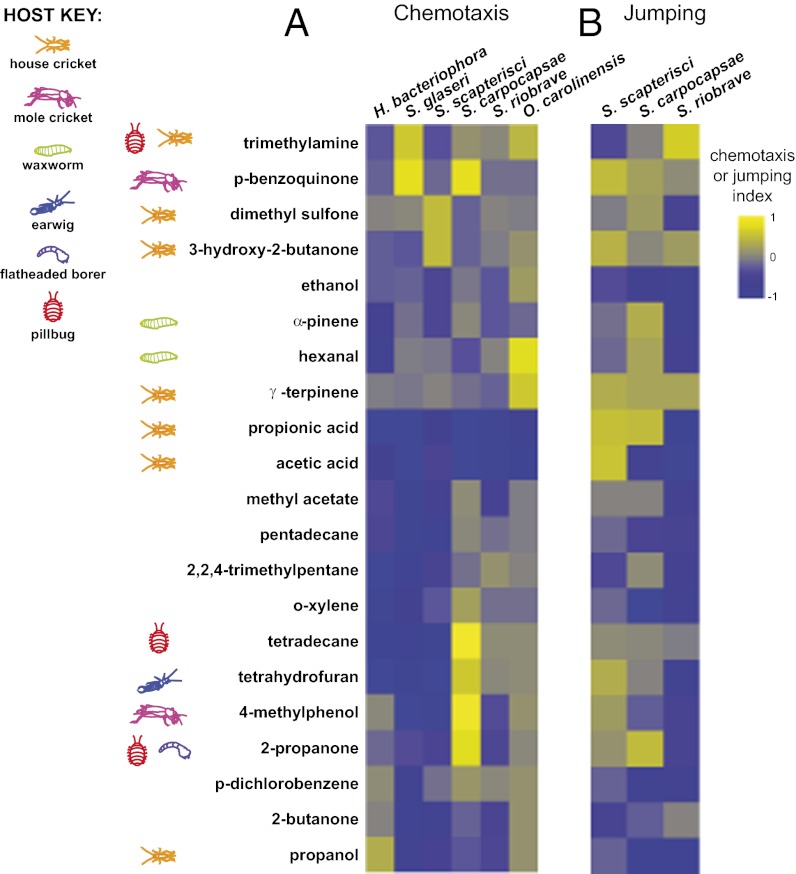Fig. 6.
EPN host-seeking behavior is stimulated by a wide variety of host-derived odorants. (A) Chemotaxis of EPNs to host-derived odorants. The order of both the nematodes and odorants in the heatmap was determined by hierarchical cluster analysis (Ward’s method). EPNs respond differently to different host-derived odorants (P < 0.001, two-factor ANOVA with replication). EPNs also displayed unique odor–response profiles (P < 0.05, two-factor ANOVA with replication, with a Bonferroni posttest), with the exception of S. riobrave and O. carolinensis, which did not differ from each other significantly. n = 4–10 trials for each EPN–odorant combination. Data for H. bacteriophora and S. carpocapsae responses to acetic acid, 2-butanone, dimethyl sulfone, ethanol, hexanal, 3-hydroxy-2-butanone, methyl acetate, α-pinene, propanol, propionic acid, γ-terpinene, and trimethylamine are from Hallem et al. (13). Mean, n, and SEM values for each assay are given in Dataset S10; P values for each posttest are given in Dataset S11. (B) Jumping of EPNs to host-derived odorants. The order of nematodes in the heatmap was determined by hierarchical cluster analysis (Ward’s method); the order of the odorants is as in A. EPNs respond differently to different host-derived odorants (P < 0.0001, two-factor ANOVA with replication), and the three species display unique jumping odor–response profiles (P < 0.001). n = 2–11 trials for each EPN–odorant combination. Mean, n, and SEM values for each assay are given in Dataset S10; P values for each posttest are listed in Dataset S12.

